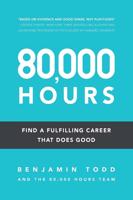Publisher's Synopsis
Learn about artificial intelligence and human-robot interaction by reading nine famous short stories, each accompanied by an explanation of the real science at the level of a TED talk.Artificial intelligence for robots may be the most transformative technology of the future digital revolution. But AI isn't just about the algorithms on the inside of the robot, it is also about how those algorithms will impact how we humans will work with robots. This critical field of study is called human-robot interaction: how we give commands to robots either explicitly or implicitly, how well they will be able to follow our directions and intent, and whether artificial intelligence will really lead to a robot uprising.Learn AI and Human-Robot Interaction from Asimov's I, Robot Stories provides an introduction to human-robot interaction for the layperson, from advanced high school students to managers to fans of Bill Nye and Neil deGrasse Tyson to students and teachers looking for a supplemental textbook for formal courses in artificial intelligence and robotics. It is a companion to Isaac Asimov's I, Robot collection of his most famous and entertaining stories in the world about robots, including the one that introduced the Three Laws of Robotics. Each of the stories unintentionally illustrates one or more core concepts in human-robot interaction: how verbal and non-verbal communication works; the flaws in the Three Laws of Robotics; the Uncanny Valley; transparency and visibility; trust; how robots reason; the types of user interfaces; and if a robot can have full moral agency. In this companion book, each I, Robot story is accompanied by description of how the science behind the core concept works at the level of a TED talk. In the last chapter, the book pulls together the principles illustrated in the different stories into a comprehensive overview of the field of human-robot interaction, highlighting the challenges, and opportunities, of building artificially intelligent systems and the ethical implications. The book also provides study questions that can be used for self-study, home schooling, or in a classroom. Prof. Robin R. Murphy is one of the founders of the field of human-robot interaction, an award winning textbook author, a TED talk speaker, and has been declared one of the 30 Most Innovative Women Professors Alive Today by The Best Master's Degrees and one of the most influential women in technology. Her interest in human-robot interaction resulted from her field work in using robots for disaster response. As she participated in disasters such as the 9/11 World Trade Center, Hurricane Harvey, and the Fukushima Daiichi nuclear accident, she documented that the robots physically worked but there was an unusually high rate of human error, frustration, and fatigue. Murphy frequently appears on CNN, NBC, NPR, Popular Science, NY Times, and the popular press. As an Innovative Teaching Faculty Fellow at Texas A&M, she pursues more engaging forms of education, particularly the use of science fiction to enable students to better visualize the abstract concepts in artificial intelligence, how the algorithms actually work, what would be the impact on systems design, and explore the ethics of artificial intelligence. This resulted in her Robotics Through Science Fiction blog, her book 2018 book Robotics Through Science Fiction: Artificial Intelligence Explained Through Six Classic Robot Short Stories, and her ongoing column on science fiction and science fact for Science Robotics, one of the top scientific journals.





















